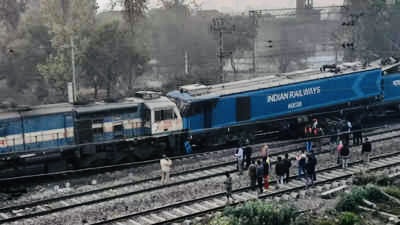The recent collision of two goods trains at Sultanpur has sent shockwaves through the Indian railways and raised questions about the safety measures and protocols in place. Such incidents serve as a reminder of the complex nature of railway operations and the critical need for continuous vigilance. In this article, we delve into the possible factors behind the collision and discuss its implications.
Potential Factors:
- Human Error: Preliminary investigations often point to human error as a leading cause of train collisions. Factors such as miscommunication, signal misinterpretation, or failure to adhere to safety protocols can have catastrophic consequences. The investigation into the Sultanpur collision will likely examine the actions of the train crew and related personnel.
- Signal Failure: Malfunctioning or faulty signals can significantly contribute to train accidents. A failure in the signaling system can result in confusion or miscommunication, leading to trains occupying the same track simultaneously. A comprehensive examination of the signaling infrastructure at Sultanpur will be essential to determine if technical issues played a role.
- Operational Oversight: Inadequate coordination and supervision can also be contributing factors. Railway operations involve intricate scheduling, track management, and routing decisions. Any oversight or lack of oversight in these areas can increase the risk of collisions. The investigation will likely scrutinize the operational practices at Sultanpur and assess whether any deficiencies existed.
The collision of two goods trains at Sultanpur serves as a wake-up call for the railway industry, highlighting the need for continuous efforts to enhance safety measures and prevent accidents. Investigations into the incident will shed light on the specific factors that led to the collision, enabling authorities to implement necessary reforms. By addressing the potential causes and implications of this incident, the rail industry can strive towards a safer and more efficient railway network for the benefit of all stakeholders involved.

